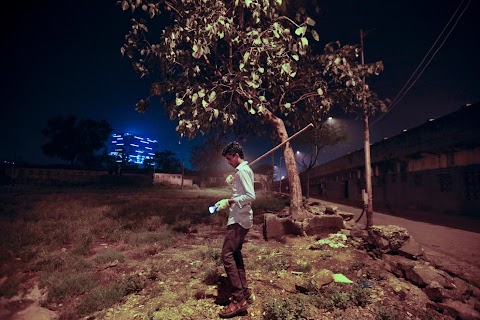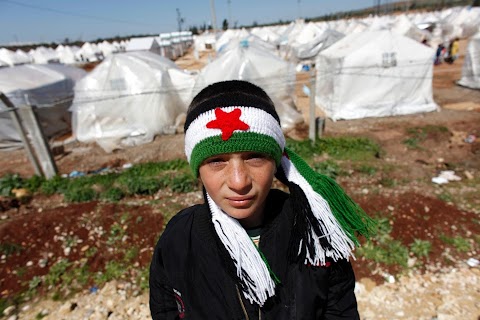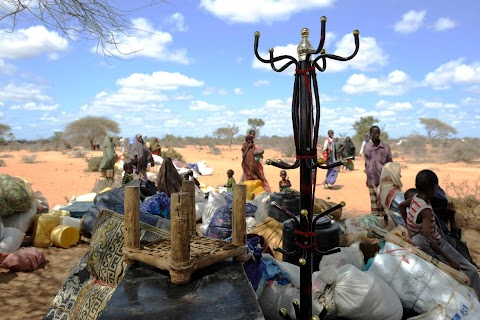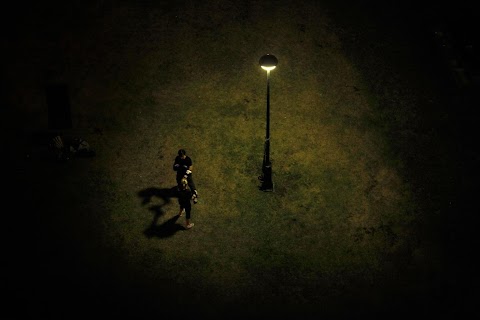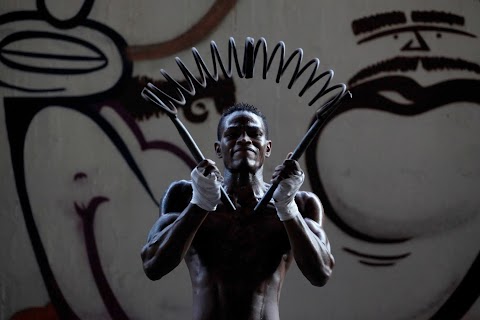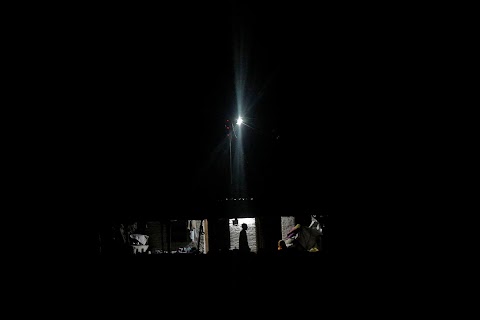
Land of the midnight sun
 Adnan Abidi
Adnan Abidi
The arrival of solar power in 2011 made a profound change to the remote Indian village of Meerwada, which used to grind to a halt after darkness fell.
Now, after the sun sets, solar-powered lights illuminate residents' houses and their lives.

Before the arrival of solar power, workers downed their tools after dark, kids strained to see their school books under the faint glow of aged kerosene lamps, and adults struggled to carry out the most basic of household chores.
Now, the installation of huge solar panels has provided a new source of energy.

Sampat Bai's house is now illuminated at night thanks to a solar-powered Compact Fluorescent Lamp. Across the village, on a humid evening splashed with rain, fans whirr, children sit cross-legged to swat up on their Hindi and delighted residents can actually see what they are eating and drinking.
Slideshow

A solar energy electricity pole towers above the village.

A villager dries a cloth under an electric pole used to transmit solar energy.

A boy charges his mobile phone from a solar-powered electric socket.

The children huddle around the TV, which they can watch thanks to the arrival of the new form of electricity.

Children in the village watch a solar-powered television.

A family eats dinner inside their house, which is lit by solar power.

Girls study in their home, illuminated by a solar Compact Fluorescent Lamp.

A woman uses a battery-operated torch to prepare a meal in her kitchen.

A villager walks towards a house powered by solar energy.

A family eats dinner beneath the light of a kerosene lamp and battery operated torch.
"In wonderment I watched the village sparkle with the power of LED lamps. Darkness didn't stand a chance."
One day I was at Deenu bhai’s tea stall near my house in Delhi when I noticed a very young visitor: 7-year-old Sohail. He was Deenu bhai’s relative, paying him a visit from Aligarh during the summer break. As I was sipping my steaming, hot cup of tea with a snack, I saw him with a sketch book.
Hot summer mornings put off a lot of the lazy lads who normally can be found gossiping at Deenu bhai’s place. I didn't have their company, so instead I asked Sohail what he was up to. He showed me a few drawings of landscapes, mostly village scenes with huts and animals and the sun rising, painted in yellow.
I am no art critic, and I couldn’t actually make out anything in the pictures. But I remembered my own childhood days, and when I compared them with Sohail’s, I detected a similarity in our generations: neither of us had ever imagined a typical Indian village scene during or after sundown.
I come from a village named Baharpur in the North Indian state of Uttar Pradesh, and I remember we used to get up at 5 a.m. and play until 4 p.m. As darkness enveloped the village, oil lanterns were the only source of light. All major work had to be finished during the day, because there was no electricity once the sun was down.
This realisation suddenly filled my heart with respect for innovators like Sun Edison – a company dedicated to the development of solar plants that provide electricity to the remote village of Meerwada in the Guna district of Madhya Pradesh.
We reached Meerwada in the afternoon, and the village seemed similar to any other rural Indian settlement, but as time passed during my shoot, it was magically transformed. In wonderment, I watched the village sparkle with the power of LED lamps. Darkness didn’t stand a chance.
I asked myself whether having light at night was the only benefit the village received. I found it wasn't. A woman named Manorbai told me that she had started a tailoring job at night after finishing her daily duties in the field and as a housewife. She was earning a few extra dollars for her family, which brought them some added comfort and conveniences.



